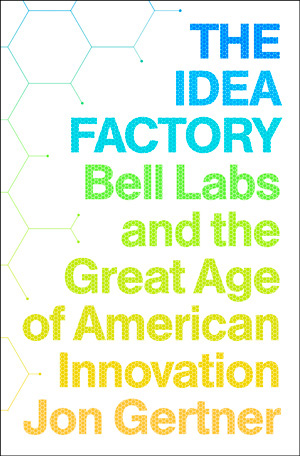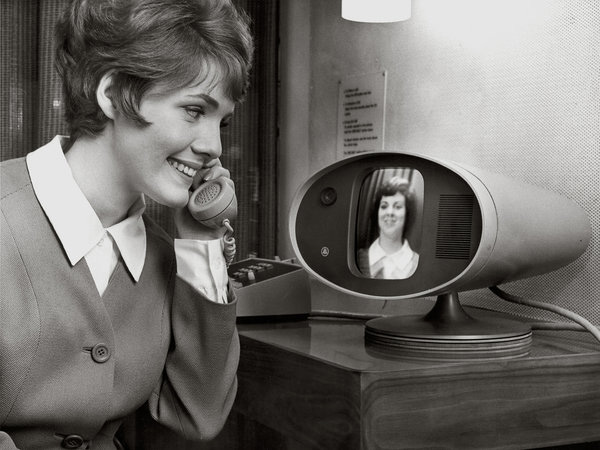Successful innovation requires the meeting of the right people at the right place with just the right problem.
 At the turn of the twentieth century, Thomas Edison was the most famous inventor in the world. He hoarded useful materials, from rare metals to animal bones, and through careful, methodical testing, he made his new inventions work, and previous inventions work better. Churning out patent after patent, Edison?s particular form of innovation was about the what, and not about the how ? the latter he could outsource and hire for.
At the turn of the twentieth century, Thomas Edison was the most famous inventor in the world. He hoarded useful materials, from rare metals to animal bones, and through careful, methodical testing, he made his new inventions work, and previous inventions work better. Churning out patent after patent, Edison?s particular form of innovation was about the what, and not about the how ? the latter he could outsource and hire for.
?In 1910, few Americans knew the difference between a scientist, an engineer, and an inventor? explains Jon Gertner at the beginning of his lively book about a place that fostered a home for all three, The Idea Factory: Bell Labs and the Great Age of American Innovation. The difference was clear to Edison, who was generally disinterested in the theory behind his inventions, filling his Menlo Park complex with specialists to do the work he?d rather not. ?I can always hire mathematicians,? he said, ?but they can?t hire me.?

At Menlo Park, Edison hired scientists to do the theoretical work so that he could concentrate on testing his inventions.
To be an inventor, Gertner insists, one needed ?mainly mechanical skill and ingenuity, not scientific knowledge and training.? (Qualities that the ingenious Hedy Lamarr had alongside her mechanical partner George Antheil, an unlikely artistic pair who invented an essential frequency-hopping radio signal during World War II that later gave us technologies like Bluetooth and wifi.) For more than sixty years, from the 1920s to the 1980s, Bell Labs would bring together all of the above to create essential inventions of the twentieth century: the transistor, radar, the laser, communication satellites, UNIX, and the C++ programming language.

Adventure stories about 'wireless boys' and 'radio boys' were popular around the turn of the century.
It was the child-tinkerers during the first decades of the century who would populate Bell Labs during its explosive growth in the 30s and 40s. Adventure books recounted tales of ?Wireless Boys? (or ?Radio Boys?) who solved dastardly crimes and helped those in need, all by building their own wireless telegraphs at home. ?Wireless is a thrilling pastime!,? exclaims the author of one of these books:
To be a wireless boy and make your own apparatus is to have the kind of stuff in you of which successful men are made ? men who, if they were shipwrecked on a desert isle at daybreak, would have something to eat by noon, a spring bed to sleep on by night and a wireless station the next day sending out an SOS to ships below the horizon, for help.
Around this time, Alexander Graham Bell?s American Telephone and Telegraph Company (AT&T) had a massive, government-sanctioned monopoly on all telephone subscriptions, buying regional phone companies, single-handedly manufacturing all of the parts for all of the cables, switches, repeaters, and vacuum-tubes. AT&T made the phones work, it made the parts that made the phones work, and it hired scientists and engineers to make the phones work better. During the 1920s, this third arm is what became Bell Labs.

Tesla I communications satellite for television signals and space data, 1962. (Alcatel-Lucent USA Inc. and the AT&T Archives and History Center)
In the beginning, Bell Labs was populated with grown-up wireless boys ? physics, engineering, and chemistry grad students and junior professors seduced away from colleges with astronomically better pay. The new recruits were required to climb telephone poles, operate a switchboard, and sign a paper that sold all rights to any future patents to AT&T for a dollar.

The Picturephone, from the 1964 New York World's Fair (AT&T Archives and History Center)
Bell Labs was a place for discovery, which wasn?t always profitable, and invention, which usually was. During World War II, the US government invested $2 billion into the development of the atomic bomb, but they invested around $3 billion in the development of radar, much of which took place at Bell Labs. (?Scientists who worked on radar often quipped that radar won the war,? Gertner writes, ? whereas the atomic bomb merely ended it.?)

In 1961, Bell Labs moved to a campus designed by Eero Saarinen. It was sold by the company in 2006.
During the post-war reorganization of the Labs, older management was demoted, younger management given new titles, and, most importantly, every research group was interdisciplinary: chemists mingled with physicists who chatted with metallurgists who lunched with engineers. Every building in the New Jersey campus was interconnected and no one was allowed to shut their door. This was the beginning of a newly innovative time, but not the same ?genius?-driven Eureka! moments that seemingly characterized the work of Edison. Gertner writes:
At the start, forces that precede an invention merely begin to align, often imperceptibly, as a group of people and ideas converge, until over the course of months or years (or decades) they gain clarity and momentum and the help of additional ideas and actors. Luck seems to matter, and so does timing, for it tends to be the case that the right answers, the right people, the right place ? perhaps all three ? require a serendipitous encounter with the right problem. And then ? sometimes ? a leap. Only in retrospect do leaps look obvious.
(?Chance favors the connected mind,? Steven Johnson famously observed in his own exploration of how innovation happens.)
The story of The Idea Factory is one of individuals, architecture, millions of tiny moving parts, deliberate work, and, of course, luck and timing. It was a culture of creativity that worked for its age, impossible to reproduce in quite the same way, nor would we want to. Today, we might subscribe to the philosophy that ?creativity is just connecting things,? as Steve Jobs once said about his own idea factory, but first someone has to test, apply, develop, and manufacture all of those connectors.
?
Source: http://www.brainpickings.org/index.php/2012/03/28/the-idea-factory-bell-labs/
bengals vs texans nfl playoffs cincinnati bengals bengals the stand josh mcdaniels cotton bowl
 Michelle Legro is an associate editor at Lapham?s Quarterly. You can find her on Twitter.
Michelle Legro is an associate editor at Lapham?s Quarterly. You can find her on Twitter. Brain Pickings has a free weekly newsletter and people say it?s cool. It comes out on Sundays and offers the week?s best articles. Here?s what to expect. Like? Sign up.
Brain Pickings has a free weekly newsletter and people say it?s cool. It comes out on Sundays and offers the week?s best articles. Here?s what to expect. Like? Sign up.
No comments:
Post a Comment
Note: Only a member of this blog may post a comment.